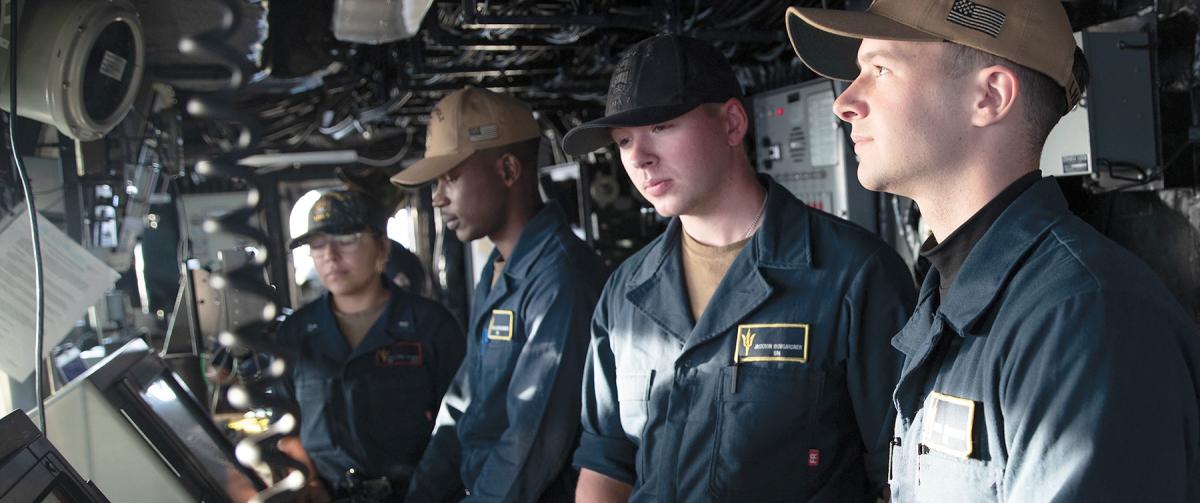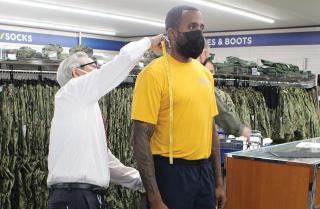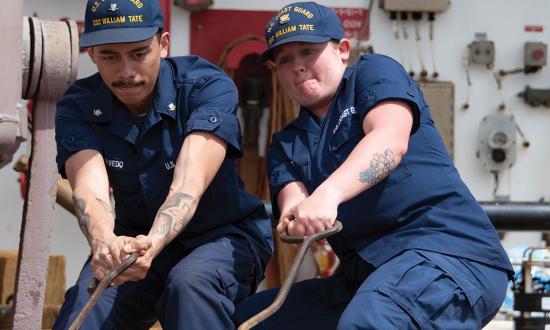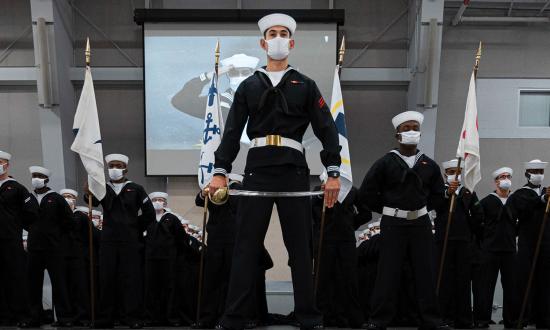Since the formation of the Continental Navy in 1776, the Navy has undergone various uniform changes to adapt to the current times. Sailors have expressed concerns about the uniform requirements of their sea bags compared to other branches of the armed forces over the years, including a lack of uniformity among the ranks. Furthermore, many question the reason for the frequent changes in the working uniform, coveralls, and dress uniforms, noting both the cost and number of items in the sea bag keep increasing—creating an undue burden on sailors.
Today, the number of items in a sea bag is much greater compared with other branches of the armed forces. This has been an ongoing issue in the Navy, which has taken minimal steps to alleviate the problem. The working coverall was replaced by the Flame Resistant Variant (FRV) only to be replaced by the Improved Flame Resistant Variant (IFRV) because earlier versions were not fireproof and did not perform as expected. The IFRV still needs improvement because it degrades after a certain number of washes, rendering it useless. Uniforms such as dungarees, utilities, working khakis, working whites, working blues (aka Johnny Cashes), coveralls, and others either have been phased out or altered to meet revised criteria or adapted to reflect shifting social norms and improve the movement of sailors around the community. Such efforts burden sailors and the Navy as a whole.
Implementing the Navy Working Uniform (NWU) type I and type II, later replaced by the type III, was a step in the right direction. Many critics, however, questioned the value of the changes to the male E-1 to E-6 uniform, with the additional zipper, and other alterations in the dress blue uniforms, and implementing the service dress whites for men and women. Bear in mind that these changes come at a cost to sailors regardless of rank. Proponents might argue that sailors receive a clothing allowance, but the amount is not enough to cover a parka and the black fleece liner, which costs more than $500, let alone other uniforms that need to be replaced or altered.
The Navy recently rolled out two-piece flame-resistant organizational clothing with a blue color for E-1 to E-6 and khaki for E-7 and above. Again, the Navy phased out working khakis and utilities years back for the NWU type I and II, which are now type IIIs, so why reinvent the wheel? Today, many sailors believe the Navy has too many uniforms altogether.
A Modern Sea Bag
Changes are necessary to properly outfit 21st-century sailors. The Navy could learn from the Coast Guard by replacing the IFRV across the ranks with the Coast Guard two-piece flame retardant coveralls, which have been proven reliable, thus eliminating the IFRV and NWU. The two-piece coveralls can be worn year-round, allowing sailors greater flexibility ashore and afloat.
Furthermore, the Navy could incorporate Air Force and Marine Corps philosophies by replacing the service dress whites and dress blues for E-1 to E-6 with the E-7-and-above dress blues with some modifications. Doing so would create a sense of uniformity among the ranks while reducing cost. Such a uniform can be used year-round. Looking forward to the integration of armed forces in theater, the Navy, Army, Marine Corps, and Air Force also could use the same type of working uniforms.
It is tradition to keep some of the uniforms, such as the service dress whites for junior sailors E-6 and below. On the other hand, the Navy must look beyond traditions to move forward. For example, it is time to stop using the phrase “Blue Shirt” to refer to E-6 and below, as it implies a lack of uniformity with E-7 and above.








